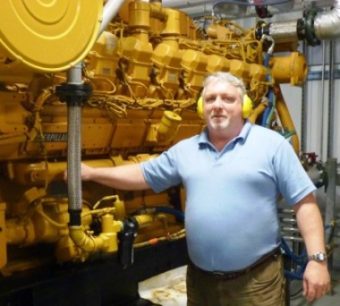
When you think about renewable energy in Alaska, what comes to mind? Probably wind, which contributes to about 3 percent of the state’s power generation. And maybe solar panels, which are starting to gain momentum. But there’s also the potential for what lies along 6,500 miles of coastline.
An Ask the Energy Desk reader wanted to know: why isn’t Alaska using more wave or tidal energy?
In Yakutat, Jeremy Kasper said he’s measured waves that were 20 feet high.
Those gnarly swells make the Southeast village a good spot to surf. But that’s not the reason Kasper has visited in the past. He’s part of a team at the University of Alaska Fairbanks, studying the feasibility of generating power from the movement of the water.
“I think this is a worthwhile technology because it basically fills in a niche,” Kasper said.
It’s a niche that can’t be filled by hydropowered dams.
Yakutat is home to about 600 people, and it’s powered using a diesel generator.

Kasper said the village’s geography and weather patterns make other types of renewable energy a challenge. He thinks solar could work in the summer when there’s increased demand for energy: the fish plant is in operation.
But when it comes to displacing Yakutat’s diesel fuel the rest of the year:
“Wave is probably their best option,” Kasper said.
In 2009, a study by the Electric Power Research Institute backed that up. It was funded by the U.S. Department of Energy. And it estimated that for under a million dollars, Yakutat could install one wave energy converter.
For reference, it would take about 15 of those to supply half of Yakutat’s energy needs. Kasper says the village has completed a number of the early studies needed for its federal permitting.
Still, there’s no planned timeline for an installation yet.
“So there’s a lot work being done in the state, but there’s not a lot of technologies that are ready to be put in the water,” Kasper said.
Part of the reason wave or tidal energy carries such a steep price tag is because the technology is so new. With wind or solar energy there’s an established chain of supply and demand, plus decades of upgrades and improvements.
“And the ability to mass manufacture,” Chris Rose said. He’s the director at the nonprofit Renewable Energy Alaska Project.
The organization refers to the potential of wave and tidal energy on its website as a “goldmine.” Albeit, one that needs more time and investment.
“So right now, what you have you have with tidal energy and wave energy,” Rose said are “the developers who are still trying to go out and perfect their design before they go out and make 10,000 of them.”
Yakutat isn’t the only place in Alaska looking into this type of renewable energy.
In 2014, a company based in Maine successfully generated a small amount of power from the current of the Kvichak River, near the village of Igiugig. The same company has explored using Cook Inlet’s massive tides as an energy source. Although there’s still more work to be done to measure the impacts on marine life, like endangered beluga whales.
Jeremy Kasper said that impact on fish is also something Yakutat needs to cross off its list before seriously considering wave energy. But he doesn’t think the development of the technology is too far off.
“They could conceivably be in the water in a couple of years,” Kasper said. “Getting to that point though is figuring out how to pay for those installations.”
In the meantime, he’ll go back to Yakutat in May to do another study. And possibly, try to catch some waves.




